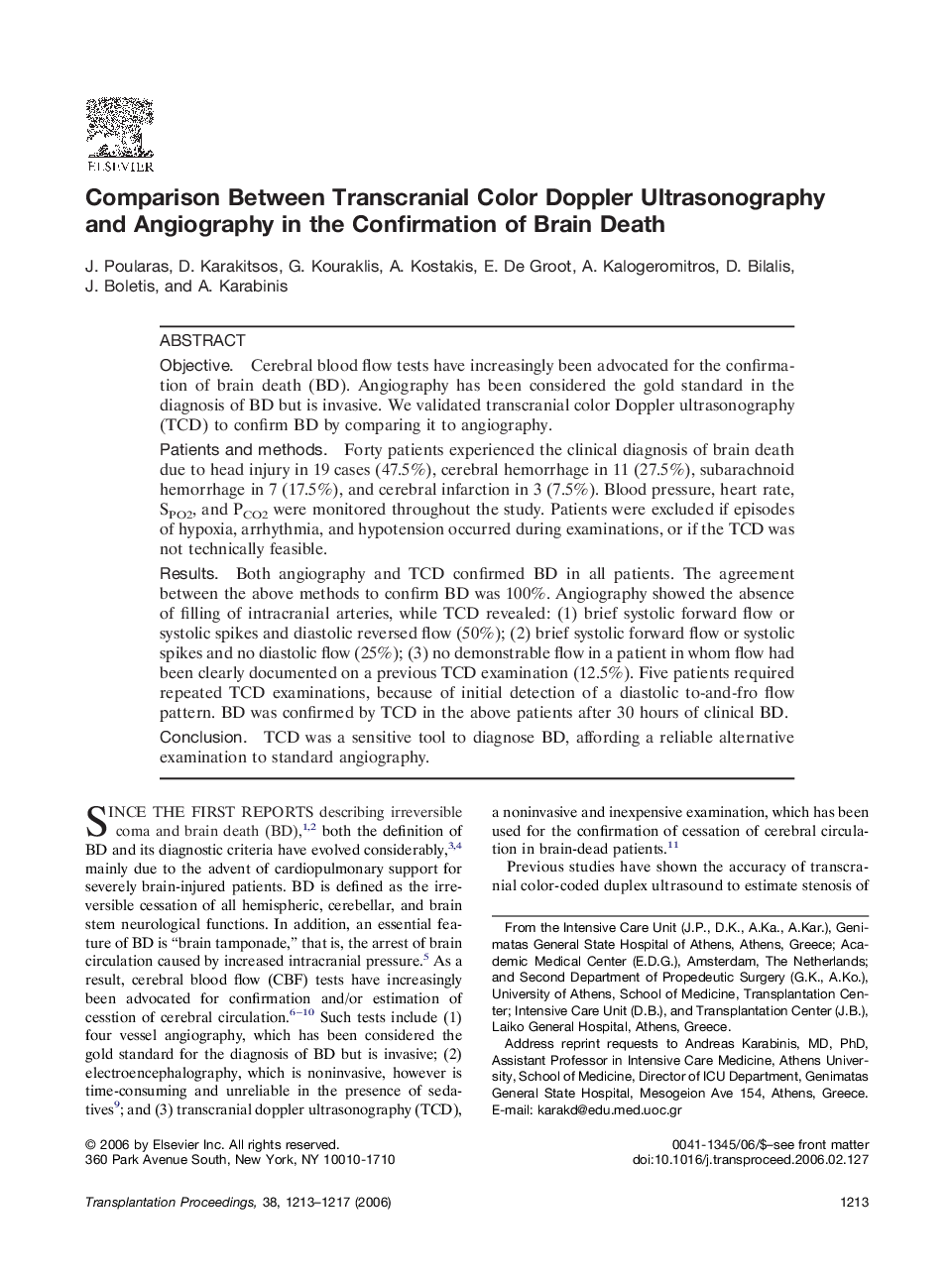| Article ID | Journal | Published Year | Pages | File Type |
|---|---|---|---|---|
| 4263399 | Transplantation Proceedings | 2006 | 5 Pages |
ObjectiveCerebral blood flow tests have increasingly been advocated for the confirmation of brain death (BD). Angiography has been considered the gold standard in the diagnosis of BD but is invasive. We validated transcranial color Doppler ultrasonography (TCD) to confirm BD by comparing it to angiography.Patients and methodsForty patients experienced the clinical diagnosis of brain death due to head injury in 19 cases (47.5%), cerebral hemorrhage in 11 (27.5%), subarachnoid hemorrhage in 7 (17.5%), and cerebral infarction in 3 (7.5%). Blood pressure, heart rate, SPO2, and PCO2 were monitored throughout the study. Patients were excluded if episodes of hypoxia, arrhythmia, and hypotension occurred during examinations, or if the TCD was not technically feasible.ResultsBoth angiography and TCD confirmed BD in all patients. The agreement between the above methods to confirm BD was 100%. Angiography showed the absence of filling of intracranial arteries, while TCD revealed: (1) brief systolic forward flow or systolic spikes and diastolic reversed flow (50%); (2) brief systolic forward flow or systolic spikes and no diastolic flow (25%); (3) no demonstrable flow in a patient in whom flow had been clearly documented on a previous TCD examination (12.5%). Five patients required repeated TCD examinations, because of initial detection of a diastolic to-and-fro flow pattern. BD was confirmed by TCD in the above patients after 30 hours of clinical BD.ConclusionTCD was a sensitive tool to diagnose BD, affording a reliable alternative examination to standard angiography.
